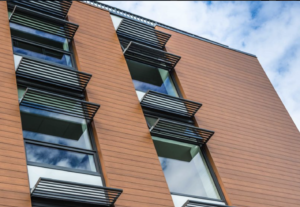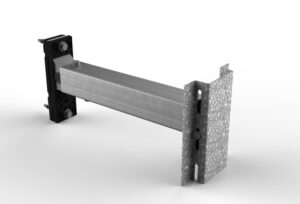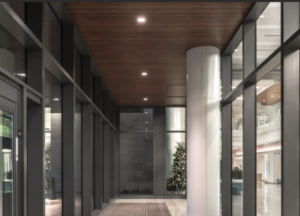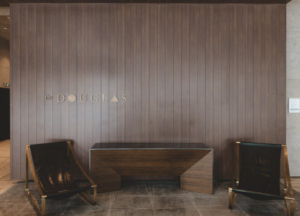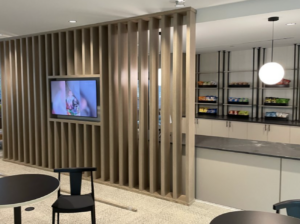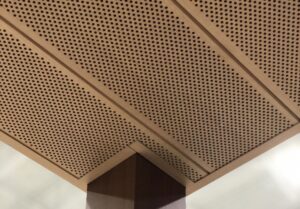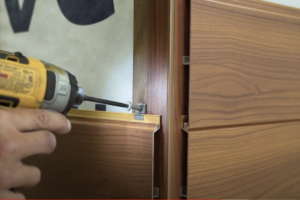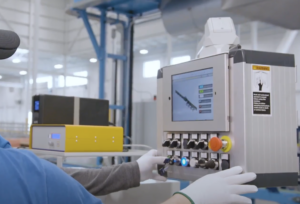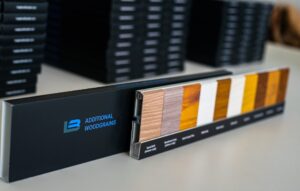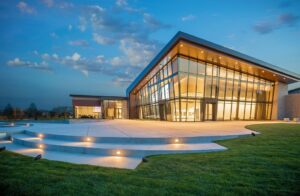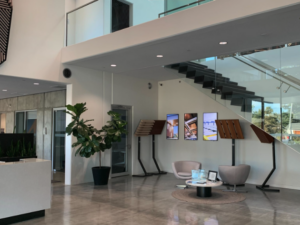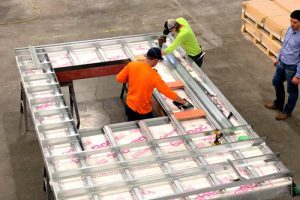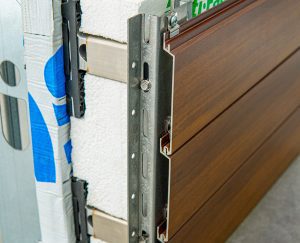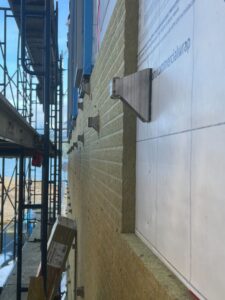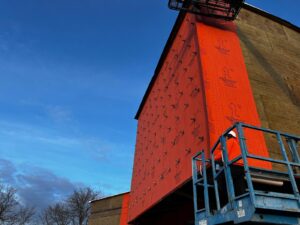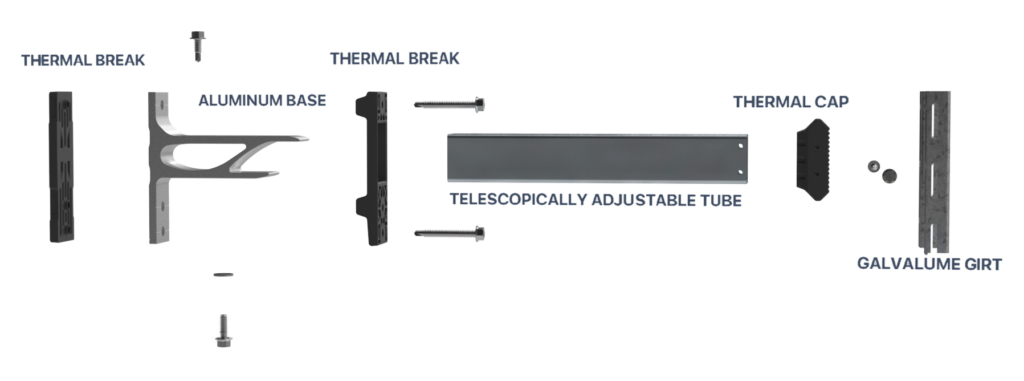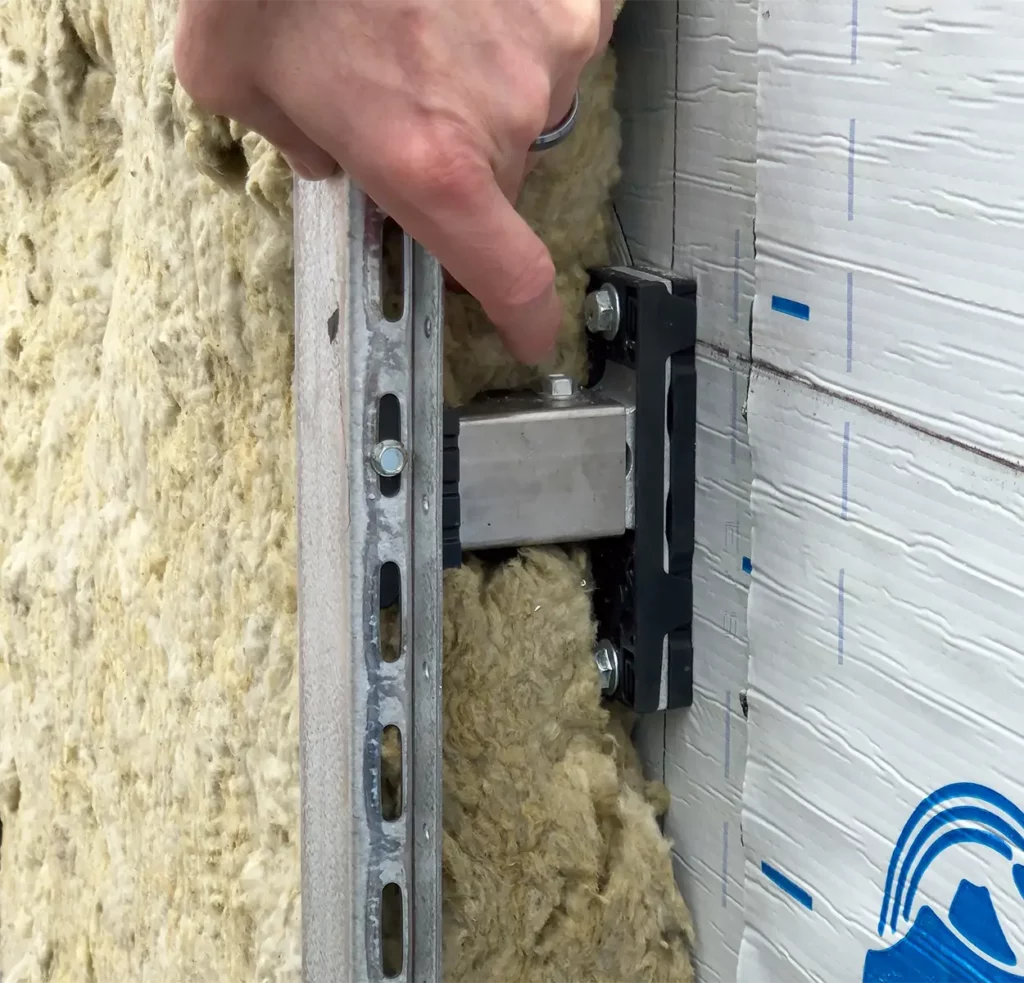Cladding Attachment Systems
Cladding attachment systems play a crucial role in contemporary building construction for a variety of reasons. They serve as the backbone, offering structural support that guarantees the stability and longevity of cladding materials.
Not only do these systems minimize heat loss and enhance energy efficiency by addressing thermal bridging, but they also safeguard the building envelope from unwanted moisture infiltration and bolster fire safety measures. Additionally, the meticulous design and seamless execution of these systems greatly contribute to the overall aesthetic appeal of the structure.
We provide top-tier cladding attachment systems designed for rear ventilated rainscreen facades. Our systems excel in minimizing thermal bridging and elevating the overall thermal efficiency of exterior wall assemblies. This translates to reduced energy consumption and a smaller operational carbon footprint for your building.
The HITCH™ Cladding Attachment System is an innovative, patented modular solution. This system offers a comprehensive range of thermally broken and intermittent structural attachment options for rain screen cladding systems across various types of exterior wall assemblies. With unparalleled strength, flexibility, and thermal performance, the HITCH™ Cladding Attachment System sets a new standard in the construction industry.
Cladding Support Systems
by Longboard®
HITCH™ can achieve effective R-values exceeding R60 for various types of wall assemblies while supporting heavy cladding loads in high wind load and seismic conditions. The HITCH™ system can accommodate continuous exterior insulation thicknesses between 1” and 16” and is therefore suitable for use in all Passive House and ASHRAE climate zones across North America.
Meeting Today's Energy Efficiency Standards
Building codes and energy standards like Passive House are evolving to meet objectives of reducing energy consumption and greenhouse gas emissions. Developed by the Passive House Institute in Germany, Passive House is recognized internationally for building healthy, climate-resilient, and energy-efficient structures.
These buildings achieve up to 90% energy savings in heating and cooling through efficient systems and certified components. The PHI tests and certifies products, providing efficiency classes to distinguish highly energy-efficient options.
Cladding attachment systems are essential for meeting Passive House energy efficiency standards. These systems reduce thermal bridging, support exterior insulation, and simultaneously minimize the total number of penetrations into the building envelope. They provide design flexibility and secure support for various cladding materials, including metal panels, fiber cement, and terracotta.
Systems like HITCH, minimize heat loss and maximize energy efficiency through effective thermal breaks. With a combination of proper insulation thickness and installation, cladding attachment systems contribute to sustainable and fire-safe building designs.
How HITCH™ Reduces Thermal Bridges
The HITCH system was designed with integrated thermal breaks at the head and the foot of the system. These are primarily designed to reduce the thermal energy transfer into the substructure or building.
At standard spacing of 32″ by 48″, the HITCH™ clip & girt system achieves up to 94% thermal efficiency.
This is made possible by the combination of high performance isolators and materials, reducing surface contact, reducing the transfer pass for energy and creating dissimilar contact interactions.

